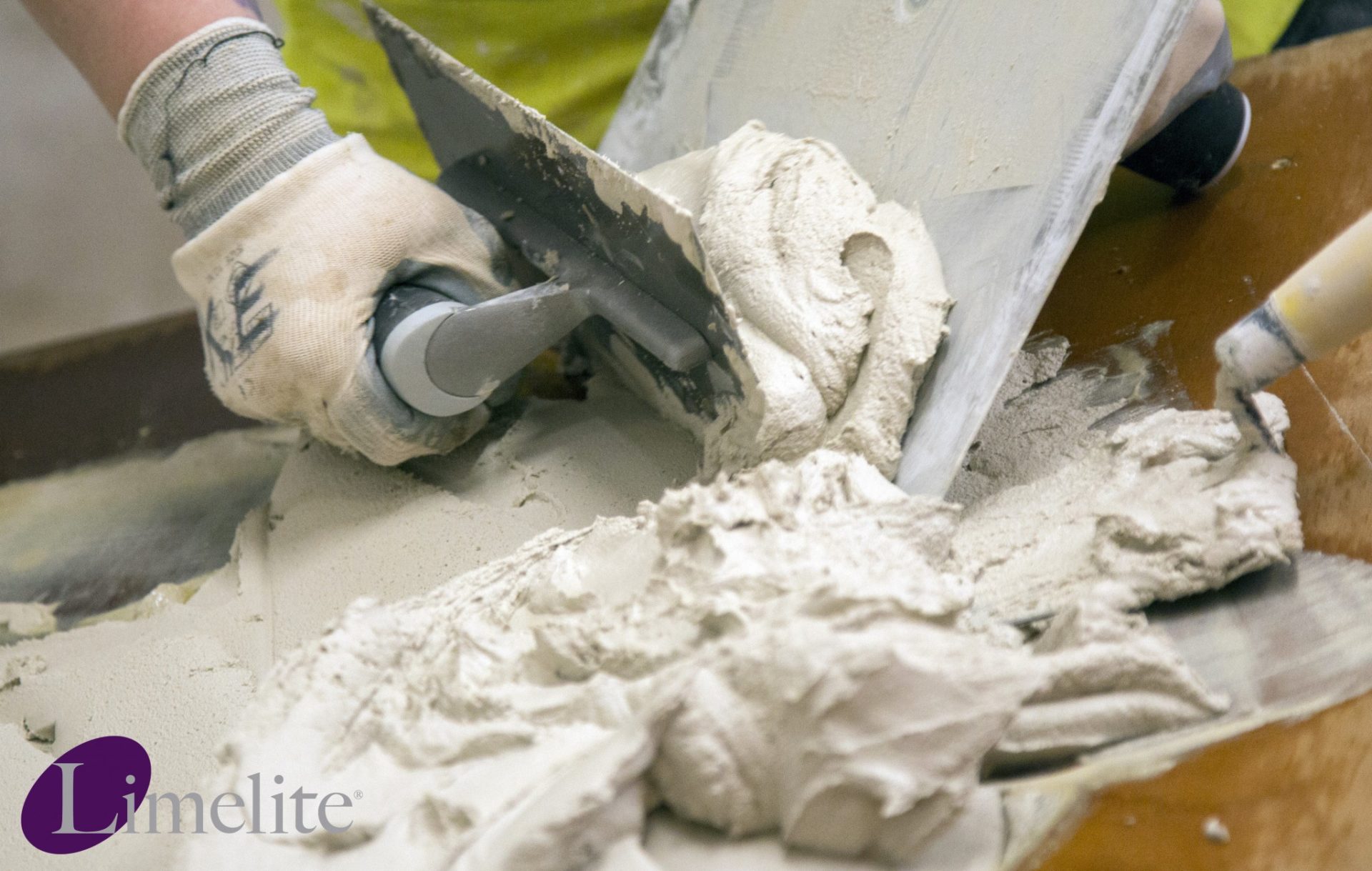The UK plaster market has been heavily shaped in the last 50 years by the rise in predominance of both gypsum plaster and plasterboard. Quick to install and cheap to buy, they have become the go-to solution for plasterers up and down the country. However, this dominance has led to their perception as a one-size-fits-all solution. Tom Emery, specifications co-ordinator at Tarmac’s Limelite division, delves deeper into a product which can all too often be overlooked: renovating plaster.
Setting the scene
Renovating plaster is not a new product – in fact, far from it. The Romans first developed a hydraulic lime plaster, and plaster has been in widespread use as a building material in England since the 13th century. The 1:1:6 ratio was popularised in the mid-19th century, and that ratio proved to be the basis for plaster for the next 100 years.
However, the introduction of gypsum plaster to the UK construction industry in the 1930s irreversibly changed the plastering landscape. With ‘just add water’ variants which simplified the mixing process becoming commonplace by the 1960s, following the post-war housing boom, lime-based plasters were in some instances overlooked.
There are many situations where gypsum plasters are rightfully the go-to product, such as in new-build applications. However, there are concerns that particularly in some retrofit applications, these products can be subject to issues following installation. The most significant of these results from gypsum plaster’s relative incompatibility with moisture. Due to the hygroscopic nature of gypsum, it easily absorbs and retains moisture from the surrounding atmosphere and substrate. Therefore, if the property in question is at risk of flooding, susceptible to damp, or is built from heritage materials – and this includes barn or warehouse conversions, as well as single skin buildings and extensions – then using gypsum plaster could potentially result in a number of post-installation issues. These could range from discolouration, efflorescence and mould growth to irreversible plaster damage.
Therefore, in order to avoid these problems, a material which is breathable and can allow moisture to pass through without affecting the integrity or appearance of the finished installation is needed. That material is a renovating plaster.
Demystifying renovating plaster
As already touched upon, renovating plasters have fallen out of favour among some UK plasterers. Aside from the quick installation times and perceived cost implications of gypsum plaster over renovating plaster, a number of misconceptions surrounding the latter have contributed to its decline. However, delving deeper into the facts around renovating plaster – coupled with understanding product developments linked to modern variants – can allay some of these misconceptions.
First and foremost, there was a perception that it needed specialist skills to install, over and above the level of even experienced plasterers. However, when it comes to renovating plasters, they can be applied in the same way as gypsum plasters, directly onto most sound mineral substrates.
While the skill of mixing and applying renovating plaster may have fallen off the agenda of plastering colleges some years ago, I have started to see it reappearing. Ensuring young tradesmen are exposed to it at the start of their career can only benefit the wider industry as a whole. For experienced plasterers, a number of training courses and CPDs, including those from Tarmac’s Limelite team, are readily available to bridge the knowledge gap.
Another supposed issue was drying time. On the contrary, renovating plaster actually dries faster than gypsum, allowing for earlier decoration. What is more, when it comes to repairing post-flood damage, gypsum plaster cannot be used until the wall is fully dry – a process which can take months. Even then, the risk of salts passing through newly applied gypsum can create efflorescence, and if the problem returns then the gypsum will simply break down. Renovating plaster, on the other hand, can be directly applied to damp walls treated with a DPC, so there is no need to wait for the walls to be fully dry, and they can be ready for paint in a matter of days. Salt inhibitors will also prevent discolouration further down the line.
Inadequate insulation was another criticism often levelled at renovating plasters. Again, this simply is not the case as renovating plaster can deliver thermal conductivity value on average three times lower than gypsum plasters. This increased thermal efficiency is due to the use of expanded Perlite, which improves the insulation properties of the wall – making it warmer to the touch – as well as reducing the density.
A final point worth clarifying is around cracking and shrinkage. While this may have been an issue with past product compositions for renovating plasters, modern variants tend to include synthetic fibres which can increase the cohesive characteristics – making the surface more resistant to wear and tear over the years – and prevent cracks forming.
Final thoughts
Ultimately, there is a place in the market for both gypsum plaster and renovating plasters. While gypsum is typically the first choice for new build properties, all the available options should be considered when seeking the most suitable solution for older properties or those at risk of moisture ingress. Renovating plasters are ideal for these scenarios, where their breathability – as well as other defining attributes – enables them to provide a solution which is durable and long-lasting while also being rapid and simple to apply.
For more information on renovating plasters, please visit www.pozament.co.uk/product-family/limelite.


